Whalemeat Agan
by Phil Cooper
It’s Monday and neither China nor Russia have nuked us. Yet.
Thanks for having a wee look into my world.
I’m about to be very brave because my brother in Australia isn’t happy that my new track layout has meant ditching the tunnel which was bought from Faller in Germany. I have to admit that it was very plasticky and I felt bad about using something shop-bought. I imagine that railway modellers’ first choice of an accessory is either a tunnel or a level crossing although mine was a set of points or turn-outs as our American friends call them.When I first began my project the first thing I thought about was making a tunnel so for the next few weeks I’m going to show you how it develops with photographic evidence.
It’s going to be emotional. Wish me luck. I’m starting with an Amazon cardboard box which contained a couple of kilos of coffee beans and smells great. I love the smell of coffee in the morning. I’ve got a percolater connected to a Hue smartswitch which turns on the percolater each morning at 8am and keeps it hot until 10.30am when I finish my 5th of the morning. Have you seen the current cost of a percolator. My one, an Eleganto cost under £30 in 2018. The current cost is £95.99!
To the tunnel! Will you please stop laughing! I’m trying.
It begins with the box!

I’ll remove various bits to give me the basic tunnel. I was going to use Sculptamold to fix landscape on top and along the side but at the moment there is no Sculptamold anywhere in GB so I’m going to try Plaster of Paris.
My plan is to paint the tunnel roof green and then add static grass and other scenery made from Sculptamold on top of the the tunnel.If it doesn’t break down I’ll add a little scenery along the side of it building it up gradually. Many modellers use either Revell or Humbrol paint which aren’t cheap. I use a Dulux paint tester. They have rollers to spread the paint but you can remove the roller and stick your modelling paint brush in it to paint detail. These cost £2.50 for 30ml from Amazon.

Right, this is probably a good time to see how REAL modellers do it.
First up making a strong debut we have Lewis Davey.who tells me that he wants to be more involved in the hobby but is still just a beginner and doesn’t really know much. Well Lewis we can all see that you’ve made a great start so stay in touch and keep us updated. Good luck and get into DCC-you won’t regret it.
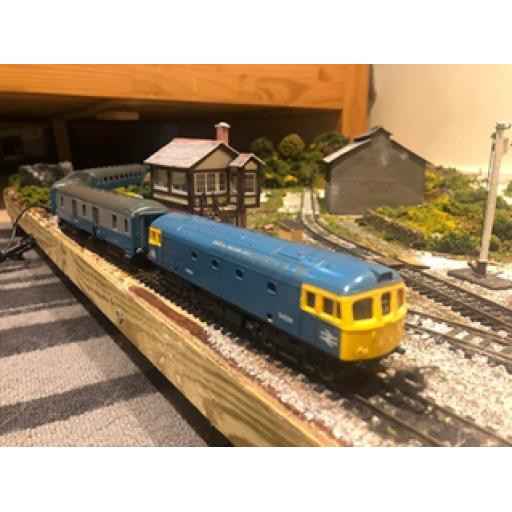
Great, weren’t they! We’ll have some more Lewis Davey magic ASAP.
Now for some news from the world of REAL railways and we start off in sunny Spain
If you’ve been to Barcelona's Sants station in recent years, you’ll probably have noticed that it isn’t, erm, the nicest of rail stations. The Catalan capital’s largest train station is a bit dark and dated – and it certainly isn’t very green.
But that’s all set to change in the next few years, with Sants slated to undergo a spectacular new upgrade that’ll transform it into one of Europe’s swishest transport hubs. Sants’ renovation plans include designs for a new concourse and waiting halls, as well as two brand-new entrances, a metro lobby and remodelled public spaces and platforms.
And that certainly isn’t all. The new Sants could boast some pretty sweet environmentally-friendly features, from being partly powered by 14,000 square metres of photovoltaic (I’ve checked the schpeelign) solar panels to using waste energy from the platforms to heat the station and concourse. The redesigned station will also be surrounded by a load of lush, grassy green spaces.
Work on Sants’ upgrade is set to break ground at the end of 2023, with the first phase due to be completed by 2026. It looks like it’ll all be pretty darn swanky – here are a few renders of the designs.
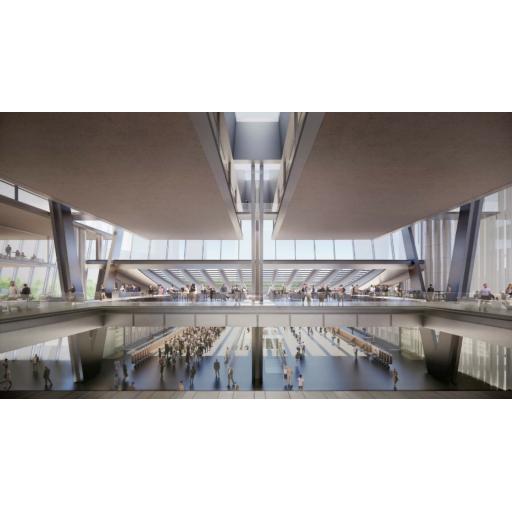 I
I

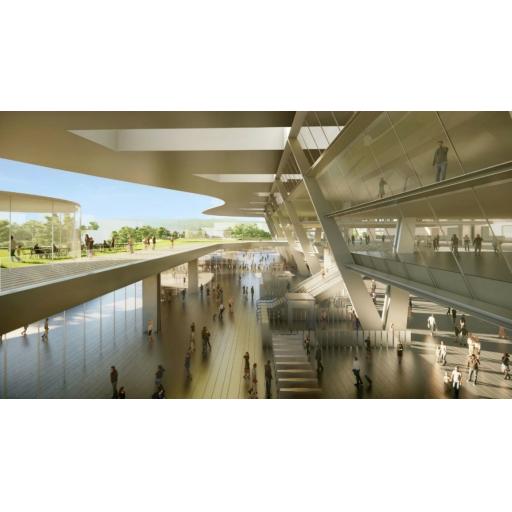
Better yet is that a glossed-up Sants will no doubt play a huge part in the ongoing Spanish rail revolution. The country is basking in plenty of new mega-cheap, high-speed routes – and, having set aside tens of billions of euros to spend on rail infrastructure over the next decade, Spain’s enviable train network is set to have us hankering even more for an Iberian rail adventure in the years to come.
Now we’re off to Portugal
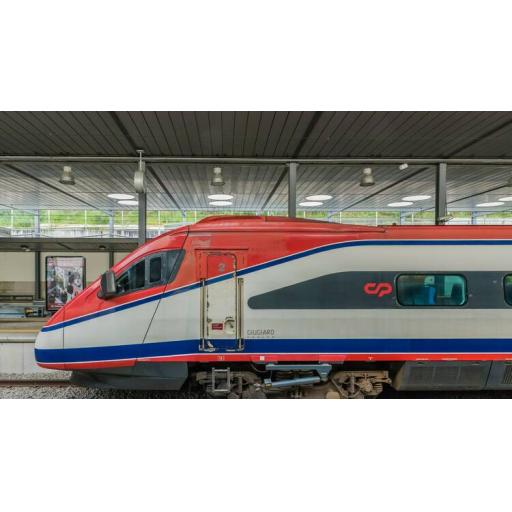
Portugal is getting a swish new Lisbon-Porto high-speed rail route
The new line will cut journey times between the two cities to just one hour and 15 minutes
The rail route between Lisbon to Porto is already the niftiest (and greenest) way of travelling between Portugal’s capital and its second city. The fastest trains currently take just under three hours to speed 209 miles (337 kilometres) up the Portuguese coast – and, excitingly, they could be about to get even faster.
Portuguese Prime Minister Antonio Costa announced plans for a brand-new high-speed line between Lisbon and Porto. The new service could reach speeds of up to 300 kilometres per hour and cut journey times down to just one hour and 15 minutes. Which is, by any measure, pretty bloomin’ speedy.
And that isn’t all. The new line will eventually wind all the way up to Vigo in Spain, creating a high-speed rail connection up the entirety of Iberia’s Atlantic coast. Set to cost at least €5 billion (£4.46 billion, $4.85 billion), the project is set to begin construction in 2024 and be completed by the early 2030s.
The Lisbon-Porto rail route is currently served by Portugal’s nationwide high-speed train network the Alfa Pendular, as well as slower intercity lines. The primary reason the new line will be faster isn’t just because the trains will travel at higher speeds (the Alfa Pendular runs at around 200 kilometres per hour) but because new tracks are being built, therefore increasing the network’s capacity.
Which is all pretty thrilling, right? And Portugal’s new high-speed line isn’t the only spectacular and ambitious rail project on the Iberian peninsula. Spain has recently launched a load of new high-speed rail routes and pledged to spend tens of billions of euros on rail infrastructure over the next decade. Viva the Iberian rail revolution.
Anyway on with the photos
Next up some more photos from John Batley’s “Harold Road” layout which features more supreme trackwork.
Great stuff again from John although Harrison was disappointed that there wasn’t any of your 68s anywhere but he did quite like the 67s. My wee grandson has good taste.
Before I go on I have to make an apology. Stephen Cunningham, I’m sorry. In a recent blog I put Stephen’s name to a collection of contributor’s photos. Stephen contacted me to disavow ownership. So perhaps the real contributor can contact me or maybe I’ll say they’re mine but you all know that I’m not that talented!
CAN I ALSO SAY THAT NONE OF OUR CONTRIBUTOR PHOTOS CAN BE RE-USED WITHOUT PERMISSION FROM THE CONTRIBUTOR. IF YOU WANT TO USE ANY PLEASE CONTACT ME AND I WILL CONTACT THE CONTRIBUTOR.
And now I have some great photos, definitely from Stephen this time, with lots of BR Blue and some BR Green.
We’ve had lots of photos featuring great scenery so Stephen’s industrial scenes are very welcome. I love them and all those diesels. I can almost smell the oil! As a proud Highlander I love the scenic stuff but I also very much like these industrial scenes. So keep them coming Stephen, they’re terrific.
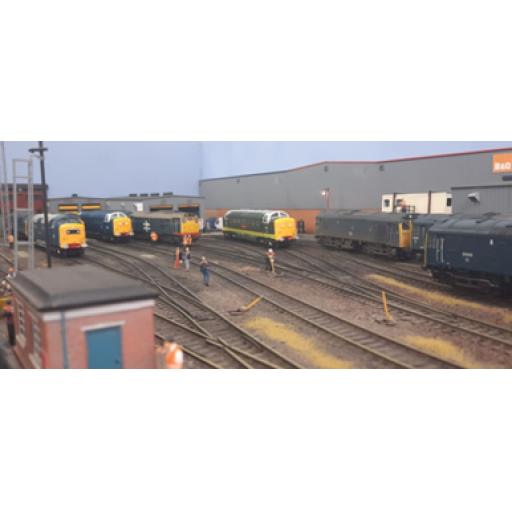
Now for some more news. This isn’t related to trains but I thought some of you might be interested because it’s an amazing deal.
Hong Kong will pay for your plane ticket to visit in 2023
HK is giving away 500,000 plane tickets as it looks to revive its tourist industry.
Hot on the heels of Japan reopening to travel, another Asian travel hotspot has started welcoming visitors again – and it’s got a very tempting scheme to get you to visit. The Hong Kong tourist board plans to give away half a million free plane tickets to encourage tourism in 2023.
The Hong Kong Tourism Board has already bought the tickets – it purchased them in 2020 from carriers including Hong Kong Airlines, Hong Kong Express and Cathay Pacific as part of the government support package for the aviation sector.
A one-way flight to Hong Kong would normally cost upwards of £500 from London or $1,000 from the west coast of the USA, and in total, it’s estimated the giveaway scheme will cost the Hong Kong government HK$2 billion to run. But that’s clearly worth it for a destination that has seen its tourist industry more or less completely collapse over the past few years – first due to the civil unrest of 2019, then the pandemic and one of the world’s strictest travel lockdowns.
The Hong Kong Tourism Board says that it will announce more details of the free plane tickets once all remaining local health restrictions are lifted, aiming to launch the campaign in early 2023. Initially, the giveaway would target south-east Asian countries.
There are still significant barriers to rebooting HK’s tourist industry, including the closure of Russian airspace and ongoing restrictions in mainland China. So a free trip to check out Hong Kong’s incredible restaurants, best-in-class bars, distinctive local neighbourhoods and mountainous hiking trails would be too good to pass up.
A bit closer to home. For me anyway. Ashford International Model Railway Excellence Centre is to conclude its first full year of operations with a celebratory event marking the 180th Anniversary of the South Eastern Railway arriving in the town in 1842.
To be held over the weekend of the November 19/20 in Ashford, in venues linking the town centre with the home of the Railway Works in Newtown, “Ashford180” is expected to feature a range of exhibitions, displays and activities with a strong link to local railway history.
Two model railway exhibitions will feature new layouts alongside well-known favourites. A month-long photographic exhibition at the Gateway will showcase the work of local photographers in capturing Ashford’s railway history alongside a selection of images from the Rail Camera Club 'Rail Cameramen' Exhibition first exhibited at NRM Shildon in 2018.
A highlight will be the return to Ashford of two models built by apprentices at the Railway Works – a 7 ¼in gauge Bulleid Pacific Fighter Pilot made for Festival of Britain celebrations in 1951, and the last ever locomotive built in the Works, a 5in gauge 0-4-0 suitably named Ashford in SECR livery. These will be on display at Ashford College, alongside other large-scale models of Ashford-built locomotives, heritage organisation and society stands and rare screenings of local film-maker Sonny Hanson’s film of the Railway Works from 1947.
The Bachmann Collectors’ Club stand is expected to be present at the event, too. For those seeking refreshments, the Coachworks will organise a beer festival over the two days with visiting railway-themed guest ales and music on Saturday evening.
Main highlights of the weekend will be:
- Ashford Museum – Open Days, displays of local railway history and related exhibits
- Ashford Gateway – Photographic Exhibition from November 1-30, featuring exhibits by the Railway Photographic Society from the NRM Shildon 'Rail Cameramen' Exhibition alongside Railway Scenes of Ashford from the 1940s to the present day captured by local photographers. Screening of short films featuring Ashford’s Hidden Railway Treasures by local film maker Jasper Bouverie
- The Elwick Club – Two floors of model railways curated and mostly built by AIMREC's volunteer team including first time layouts built by its group of younger modellers, new layouts celebrating the classic years of Tri-ang and Hornby Dublo and a recreation of Lenham Station. Special guests are bringing layouts to inspire and entertain, including the classic narrow gauge 'Dovey Valley' by Dick Wyatt enjoying only its second outing in eight years, a charming Emett themed railway by Chris O'Donoghue and for the first time at exhibition together, a collection of scratch- built layouts by Nik Wilson, featuring the unique China Station waterfront tramway.
- Ashford College – Heritage railway and preservation society stands, Bachmann Collector’s Club, model railways, model engineering and displays over two floors including Mike Turner GRA premiering his commissioned Ashford180 artwork, Bob Pryor's large-scale models of famous locomotives, Ashford film-maker Sonny Hanson's record of a visit to the Railway Works in 1947 (courtesy of Screen Archive South East) and the Railway Works Apprentice models of Bullied Pacific Fighter Pilot (1951) (Courtesy of Norman Hamshere) and Ashford (1980) (Courtesy of RHDR).
Entry is priced at £10 for adults and over 14s, with wristbands available at venues and valid for both days. For the complete list of attendees, visit the AIMREC website - https://aimrec.co.uk/
Kernow Model Rail Centre has announced an exclusive model of Bachmann's OO gauge Class 37/0, as 37012 Loch Rannoch in BR large logo livery.
The KMRC Exclusive model features the following specific detail variations: Pristine BR blue large logo livery, split headcode boxes fitted with marker lights, corner handrails, round Scottish car headlamp, bufferbeam without valance and oval buffers, original windscreen, English Electric cantrail grills, rivetted boiler roof with double row of rivets, original open boiler port and safety valves, sealed water filler door and plated access steps, fabricated bogies, original speedo drive and mileage counter, original water and fuel tanks and filler valve.
The KMRC Exclusive class 37 is available in three formats, with standard DCC-ready versions, £244.95 with a Plux22 DCC decoder (The recommended decoder is Bachmann 36-570). Sound-fitted models, £344.95, are pre-fitted with a Zimo MS450P22 DCC decoder, while the sound-fitted Deluxe format, £374.95, features the new motorised fan system.
In addition, the sound-fitted Deluxe specification includes windscreen glazing that has been treated with a specialist technique to replicate the tinting seen on the prototype.
The versions available now are:
- (35-301Y) Bachmann Class 37/0 Diesel Loco 37 012 ‘Loch Rannoch’ in BR Large Logo livery. DCC ready.
- (35-301YASF) Bachmann Class 37/0 Diesel Loco 37 012 ‘Loch Rannoch’ in BR Large Logo livery. DCC sound-fitted.
- (35-301YSFX) Bachmann Class 37/0 Diesel Loco 37 012 ‘Loch Rannoch’ in BR Large Logo livery. DCC sound-fitted Deluxe.
Chris Trerise, Managing Director, said: “We are pleased to announce our second exclusive Class 37 based on the all-new tooling, high specification, Bachmann model as 37012 Loch Rannoch in her BR blue large logo livery complete with working Scottish style car headlamp fitted.”
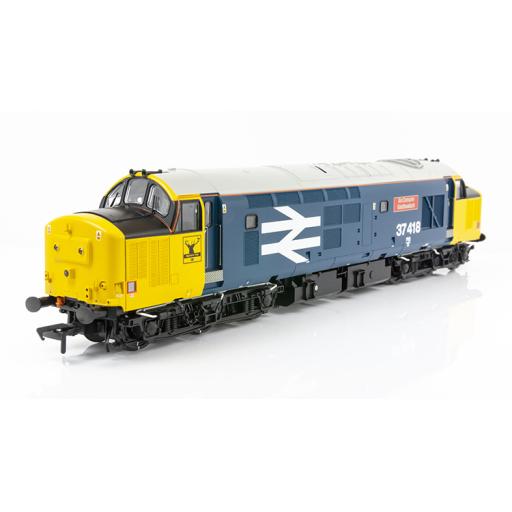
I’ll use any excuse to show one of these beauties with the (Inverness) stag antlers
The English Electric Type three, later Class 37 locomotive was built at the English Electric Vulcan Works and entered service as D6912 in March 1961. Under the TOPS numbering system, it was renumbered as 37012 in February 1974. It was initially allocated to Stratford depot and subsequently worked from Thornaby, Gateshead and March before being allocated to Eastfield in January 1981. Whilst allocated to Eastfield it was named Loch Rannoch at Fort William on March 31, 1982. It was fitted with a headlight (probably by Inverness TMD) in December 1985 and carried the name until June 1986.
Following transfer to Tinsley in July 1989, it unofficially carried the name Derwent between September 1989 and November 1990. After periods working from Cardiff, Bristol Bath Road and periods in storage it was withdrawn in December 1999.
The Kernow Model Rail Centre Exclusive detailed model in OO gauge is being produced by Bachmann. The model uses the all-new Bachmann Class 37 tooling with die-cast chassis block housing a five-pole, twin-shaft motor with two flywheels providing drive to all axles. Rotating radiator fans are driven by an independent motor and gearbox (sound-fitted deluxe version), operated via a DCC function.
The body includes many separately applied metal detail parts, such as: grab handles, windscreen wipers, etched fan grilles and sprung metal buffers. The dual fitted speaker system returns, offering authentic sound reproduction and this is pre-fitted to every model, while the Class 37 features a new ‘Yard Light’ mode, allowing red taillights and/or marker lights to be displayed at both ends of the locomotive when operating on DCC. Using the model on DCC also provides cab lighting and engine room lights at the push of a button, while analogue operation sees marker lights, tail lights and headlights – where applicable – illuminate as desired. Each model is supplied with a full set of decorated, model-specific bufferbeam pipework and accessory parts.
Models can be purchased by visiting the KMRC stores in Guildford or Camborne, or via its website - https://www.kernowmodelrailcentre.com/
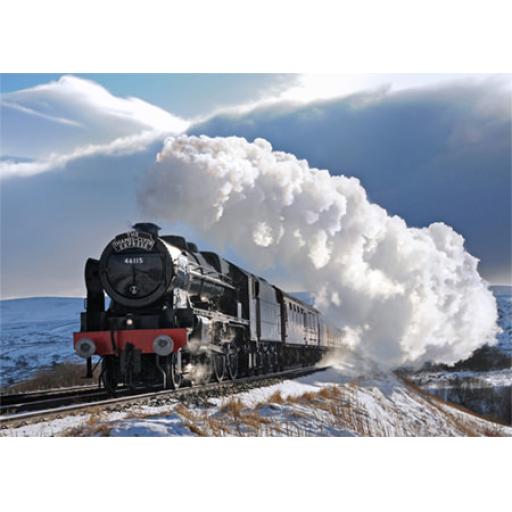
My favourite electrickery supplier DCC Concepts (everything they create is fantastic) are promising sound cards that offer easier installation and setup, advanced ABC control, automated shuttle functions, with 'stay-alive' control, the manufacturer's range is its most-advanced to-date.
Now with DCC Concepts and its stockists is a new range of Zen Blue+ decoders. Latest range additions offer extended and improved automatic braking abilities, with "simple to use one step locomotive set-up." The range is compact too, designed to fit where some of its competitors can't.
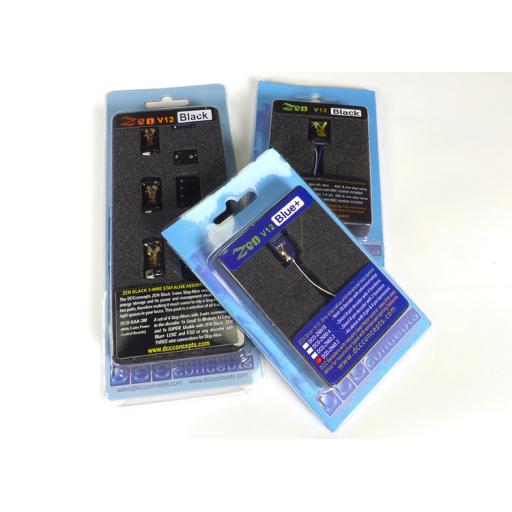
New Zen V12 Black three-wire stay-alive assortment pack (left), Zen V12 Black 8-pin four function mini (right), and Zen V12 Blue+ two function six-pin decoder with eight-pin harness (front).
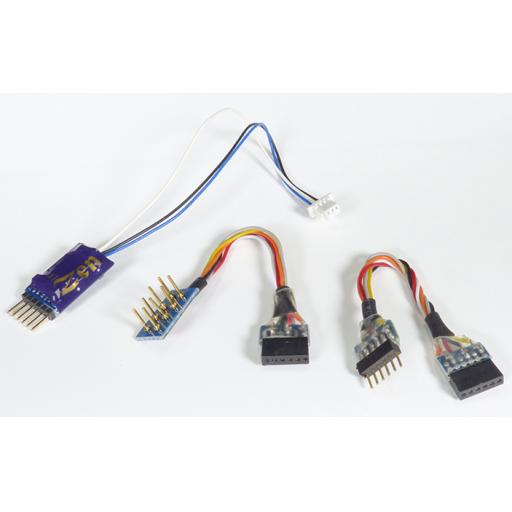
Zen V12 Blue+ (ZN68.2+) two function six-pin decoder measuring 9 x 14mm, with six and eight-pin harnesses. Continuous power 750mA (1.1A peak). The three wire output can be plugged into any of the stay-alives in the image, below.
The DCC Concepts Zen Black three wire stay-alive range separates energy storage from its power management, making it easier to install a 'stay-alive' into locomotives. Connection to stay-alives uses a plug-and-play three-wire setup.
Its Zen V12 Black pack (DCD-SAA-3W) offers a selection of 'stay-alives' in four sizes. These are compatible with its Zen Black, Blue+, Lenz, ESU and other decoder ranges with a three-wire 'stay-alive' connection.
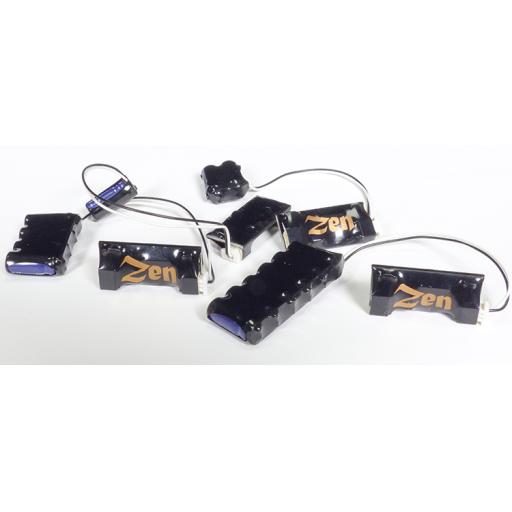
DCC Concepts' (DCD-SAA-3W) Zen V12 Black pack contains a set of four 'stay-alives' – a small, medium, large and super – with three-wire connections to the decode
Zen decoders are manufactured in an automated facility. Electronic parts have a 'best before' date because solderable surfaces need to be oxidiation-free for reliability, so parts deliveries are always 'just in time'. PCBs used in assembly are said to be created "within hours of assembly" by machinery with "superb accuracy".
DCC Concepts explained further, "critical things such as machine-applied fluxes and solder baths are replaced well before recommended dates, so that dry joints can't happen and defect-free assembly and subsequent reliability can be guaranteed. Once assembled, all of our decoders are tested at least three times before we package them for sale, so we know that they all work perfectly when we sell them."To explore the full range of DCC Concepts Zen Blue+ and Black, and all their brilliant technology visit its website - https://www.dccconcepts.com/
Hmm It could be quite pretty!

See you soon, I hope
If you would like to read more blog posts from Phil check back every two weeks or sign up to our newsletter to keep up to date on site news or when the blog posts go live.
The views and opinions expressed within the content are solely the author's and do not reflect the opinions and beliefs of Trackside Signs or its affiliates.






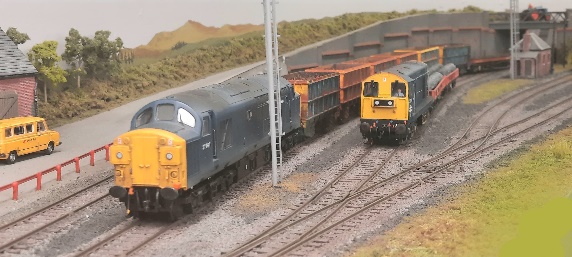













 I
I
























